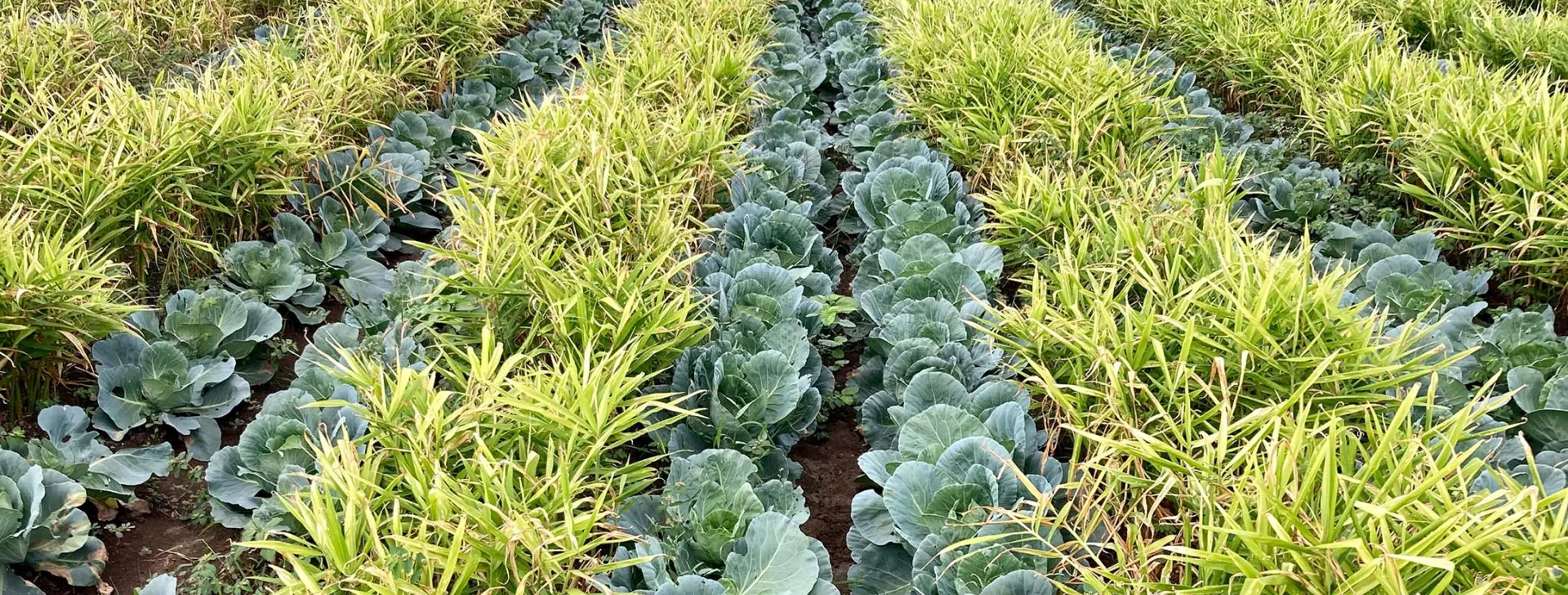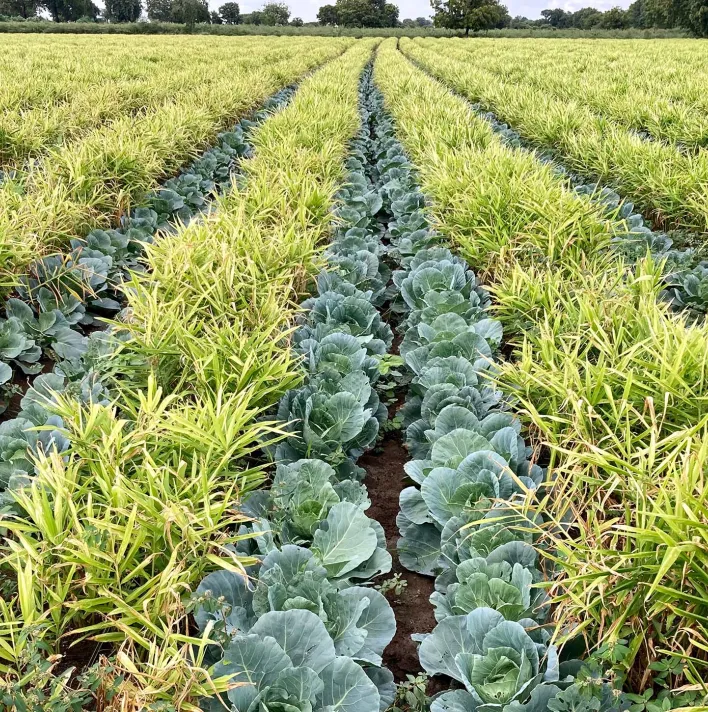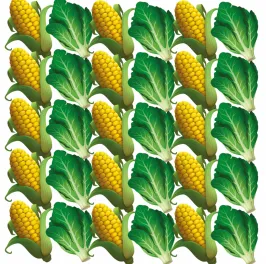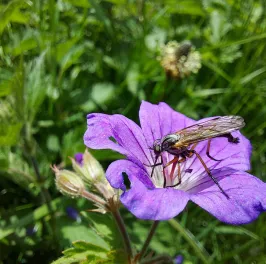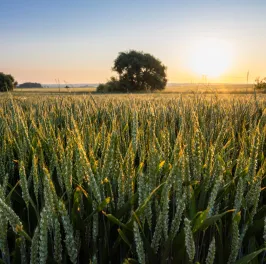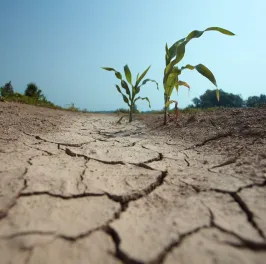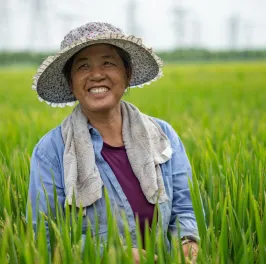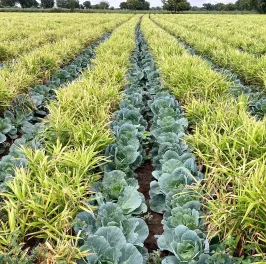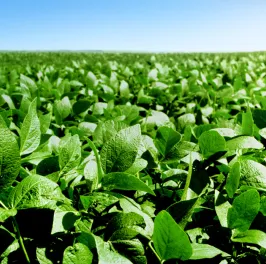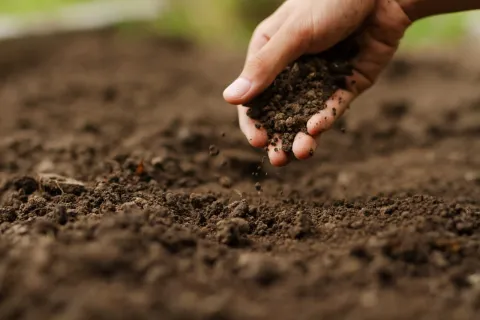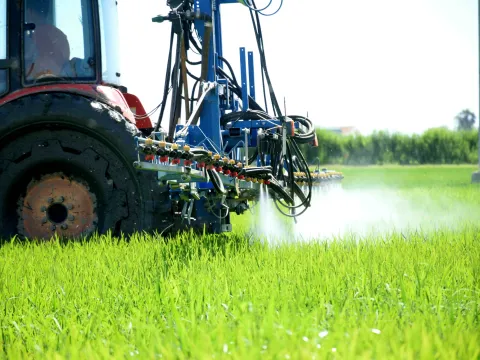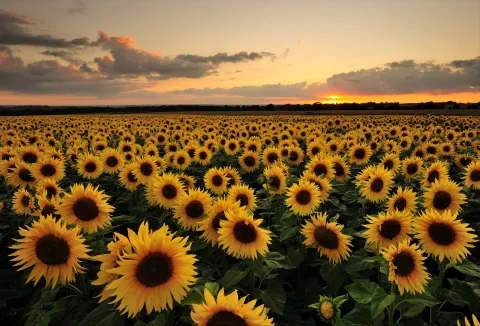
Intercropping is an agricultural practice that involves growing two or more crop species simultaneously in the same field during a single growing season with the intention of harvesting the crops at the same time. This method aims to maximize land use efficiency and capitalize on the potential benefits of plant interactions.
What is intercropping?
Intercropping is an agricultural practice that involves growing two or more crop species simultaneously in the same field during a single growing season with the intention of harvesting the crops at the same time. This method aims to maximize land use efficiency and capitalize on the potential benefits of plant interactions.
Unlike monoculture systems, where a single crop is grown in isolation, intercropping creates a more diverse and dynamic growing environment.
The success of intercropping depends on the careful selection of compatible crops and maturities that can coexist and potentially benefit from each other.
Factors such as plant height, root systems, nutrient requirements, seed size, and maturity must be considered when designing an intercropping system.
Intercropping can involve a wide variety of crop combinations, including:
- Cereals with vegetables (e.g. maize and beans)
- Tall crops with shorter, shade-tolerant crops (e.g. coconut trees and cocoa)
- Deep-rooted crops with shallow-rooted crops (e.g. sorghum and millet)
- Fast-growing crops with slow-growing crops (e.g. radishes and carrots)
By carefully selecting crop combinations, farmers can create inter-crop relationships that enhance overall productivity and sustainability.
What are the benefits of intercropping?
Intercropping offers a wide range of possible benefits that can contribute to more sustainable and productive agricultural systems.
What are the disadvantages of intercropping?
While intercropping offers numerous benefits, it also comes with certain challenges and potential drawbacks that farmers and agronomists must consider.
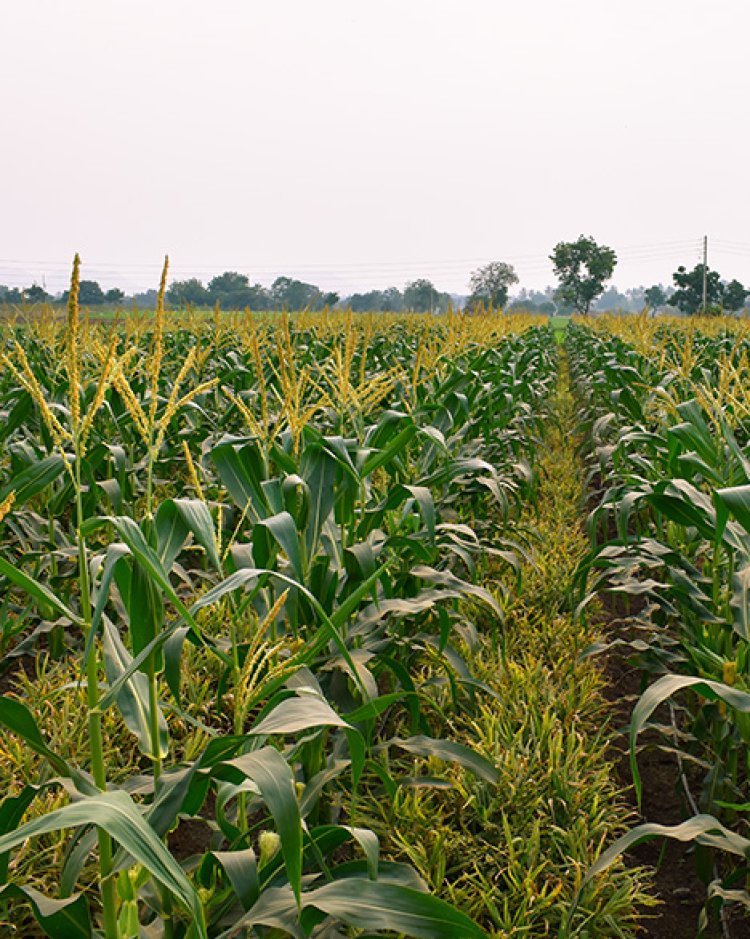
Increased management complexity: Managing multiple crops simultaneously requires more planning, knowledge, and attention to detail. Farmers need to understand the specific needs and interactions of each crop in the system.
Potential for competition: If not managed, crops in an intercropping system may compete for resources such as water, nutrients, and sunlight, potentially reducing yields of one or both crops.
Mechanization challenges: Many modern farming tools and machines are designed for monoculture systems. Intercropping can make mechanized planting, cultivation, and harvesting more difficult or require specialized equipment or modifications to existing equipment.
Harvesting difficulties: When crops mature at different times or have different harvesting requirements, it can complicate the harvesting process and potentially increase labor costs.
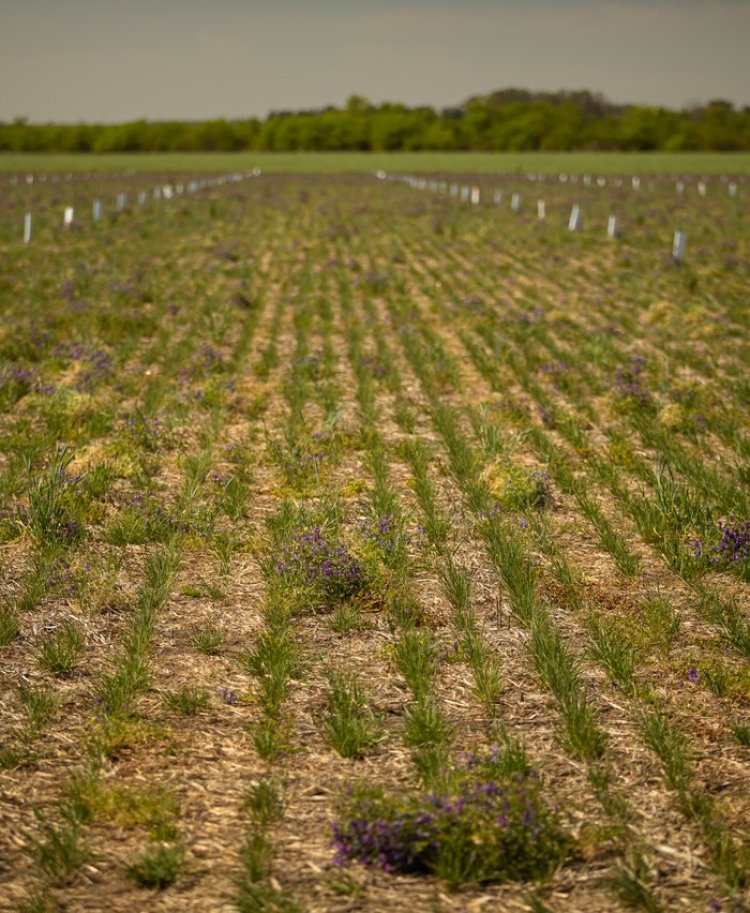
Yield measurement complexities: Assessing the productivity and profitability of intercropping systems can be more complex than in monocultures, making it challenging to compare different management strategies.
Potential for allelopathic effects: Some plants release chemicals that can inhibit the growth of other nearby plants. Improper crop selection in intercropping could lead to negative allelopathic interactions.
Market considerations: If a farmer is producing for commercial markets, there may be challenges in meeting the volume requirements for specific crops when land is shared between multiple species.
Increased labor requirements: Some intercropping systems, especially in small-scale farming, may require more manual labor for planting, weeding, and harvesting.
Pest and disease management complexities: While intercropping can help with pest management, it can also make targeted pest control more challenging, as treatments for one crop may affect the other.
Knowledge gap: Successful intercropping often requires specific knowledge about crop interactions and local conditions. This information may not always be readily available to farmers.
What is the difference between intercropping and crop rotation?
Intercropping and crop rotation are both important agricultural practices that aim to improve soil health and crop productivity, but they differ in their approach and timing.
While these practices are distinct, they are not mutually exclusive. Many farmers incorporate both intercropping and crop rotation into their overall agricultural management strategy. For example, a farmer might use intercropping during the main growing season and then rotate to a different crop or intercropping combination in the next season.
Saving rescources for a sustainable future
China has set a target of preserving at least 120 million hectares (an area slightly larger than Sweden) of arable land for crop farming and preserve its rich black soil.
Regenerative practices such as intrcropping will have a major role in achieving this goal.
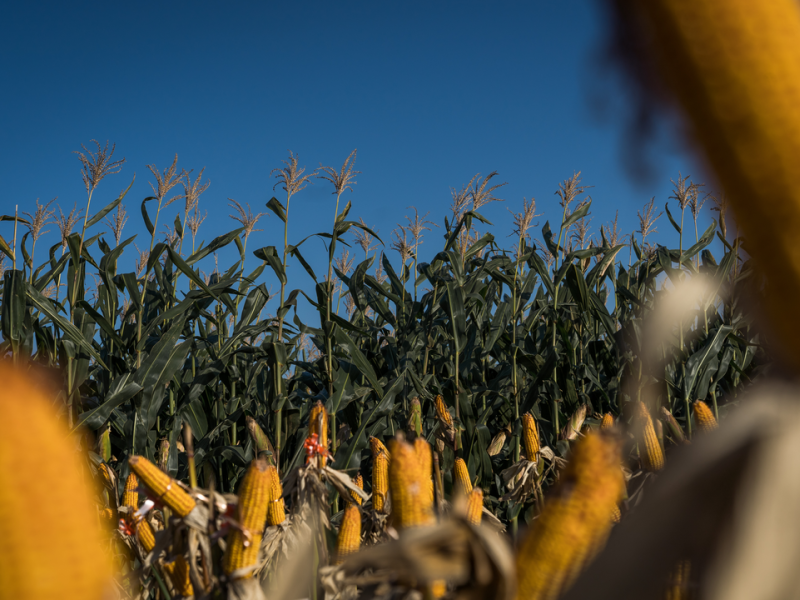
Intercropping around the world
Intercropping is practiced in various forms across the globe, adapted to local conditions, traditions, and agricultural needs.
These examples demonstrate the global diversity of intercropping practices, each adapted to local environmental conditions, cultural preferences, and economic needs. As agriculture faces increasing challenges from climate change, soil degradation, and the need for sustainable intensification, these time-tested intercropping systems offer valuable lessons for developing resilient and productive farming practices worldwide.
-
Milpa System in Central America
- A traditional intercropping system involving maize, beans, and squash
- Maize provides support for climbing beans, beans fix nitrogen, and squash acts as living mulch
- This system has been practiced for thousands of years and is still common in parts of Mexico and Central America
-
Coffee Agroforestry in Latin America and Africa
- Coffee plants are grown under the shade of taller trees
- Shade trees can include fruit trees, timber species, or nitrogen-fixing legumes
- This system provides multiple income sources and ecological benefits
-
Wheat-Chickpea Intercropping in India
- Wheat and chickpeas are grown together, often in alternating rows
- This combination improves soil fertility and provides dietary diversity
- Particularly valuable in semi-arid regions where water conservation is crucial
-
Olive-Cereal Systems in Mediterranean Countries
- Cereals or legumes are grown between rows of olive trees
- Maximizes land use in arid regions and provides soil cover to prevent erosion
- Common in countries like Spain, Italy, and Greece
-
Maize-Cowpea Intercropping in Sub-Saharan Africa
- Maize provides support for climbing cowpea varieties
- Cowpeas fix nitrogen and provide ground cover, reducing erosion
- This combination is widely used by smallholder farmers across the region
-
Rubber Agroforestry in Indonesia
- Rubber trees are intercropped with fruit trees, timber species, and food crops
- Provides income diversification and maintains forest-like ecosystems
- Helps preserve biodiversity while supporting local livelihoods
-
Cassava-Legume Intercropping in West Africa
- Cassava is intercropped with legumes like groundnuts or cowpeas
- Improves soil fertility and provides dietary diversity
- Helps smallholder farmers maximize production on limited land
-
Poplar-Wheat Systems in Northern India
- Fast-growing poplar trees are planted in widely spaced rows with wheat grown between
- Provides both short-term (wheat) and long-term (timber) income sources
- Helps meet demand for both food and wood products
-
Sorghum-Pigeonpea Intercropping in Semi-Arid Tropics
- Sorghum (a short-duration crop) is intercropped with pigeonpea (a long-duration crop)
- Maximizes resource use efficiency and provides both grain and legume crops
- Common in parts of India and Africa where rainfall is limited and unpredictable
